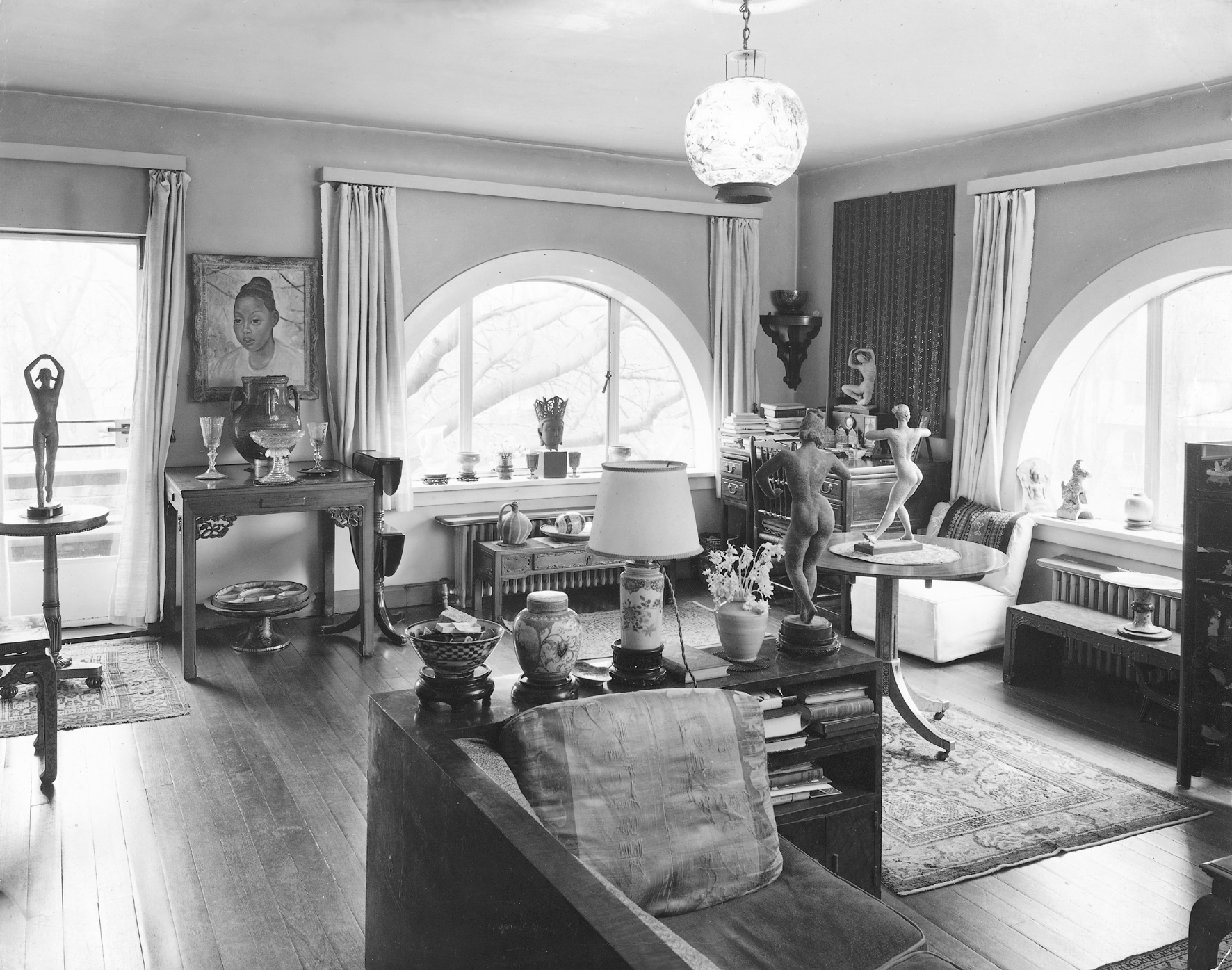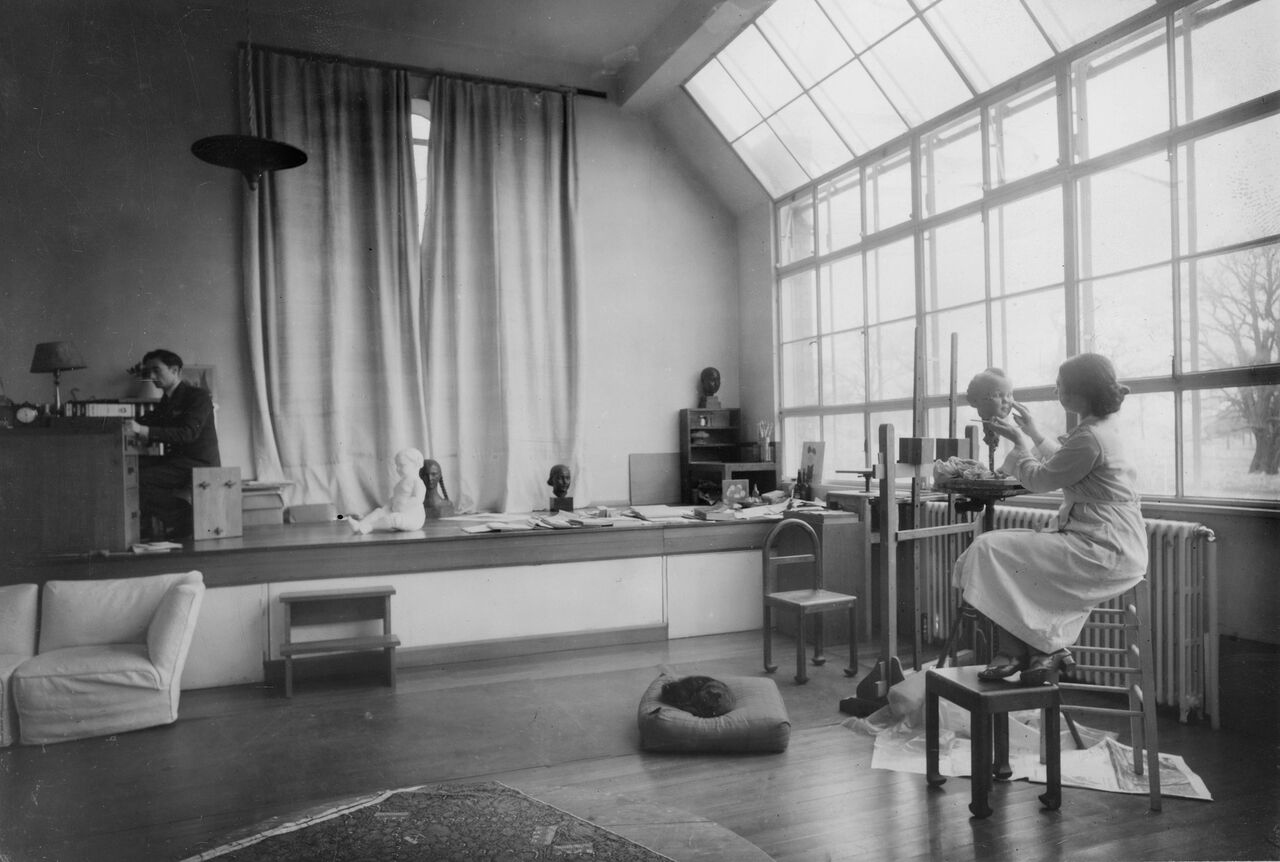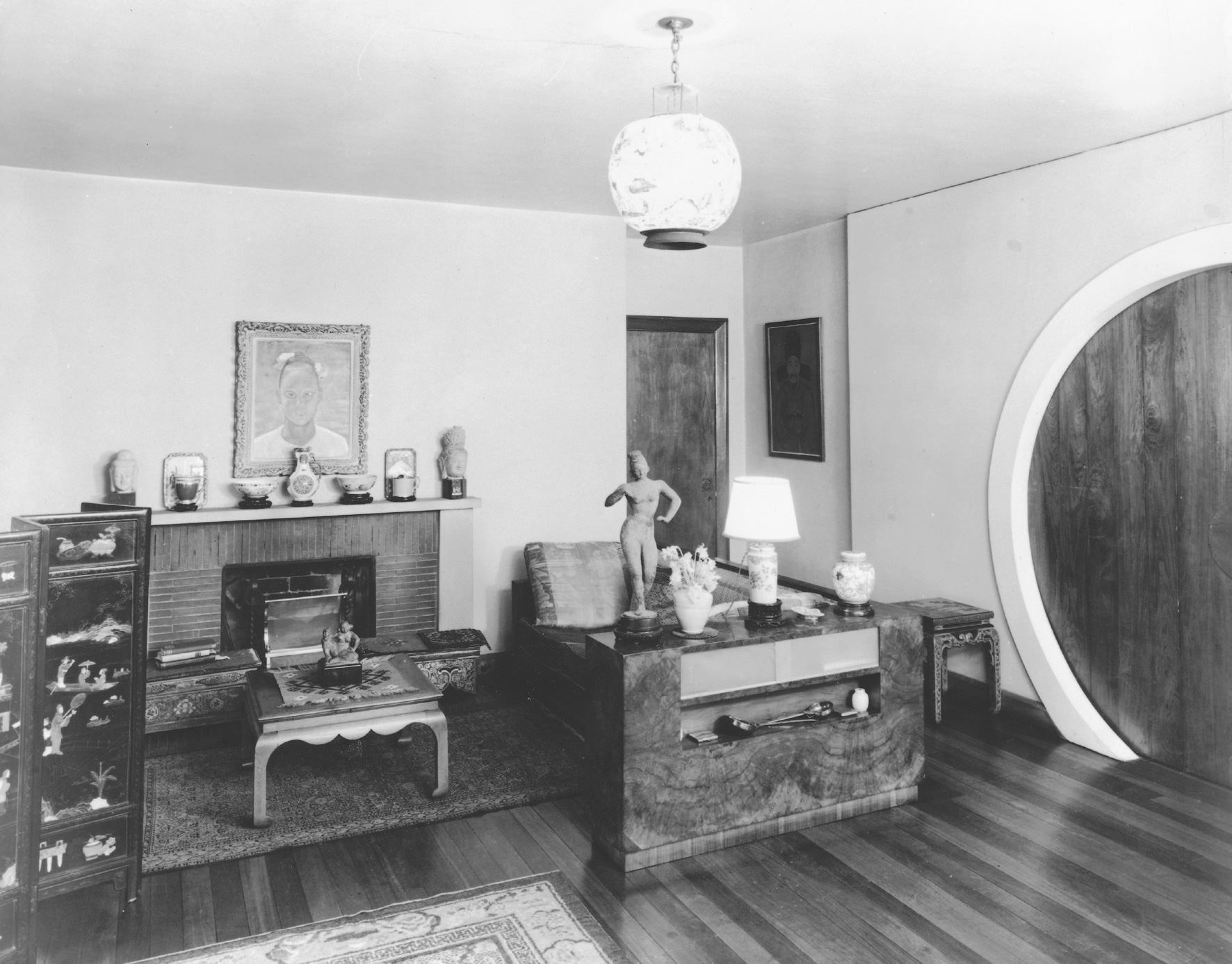Dorich House | Living & Working from Home

View of the living room at Dorich House, showing the couple’s sofa with integrated shelving © Historic England
LIVING & WORKING FROM HOME
Whilst we are temporarily closed to the public, we are working with our partner venue Stanley Picker Gallery to compile a weekly newsletter highlighting previous projects, collection items and activity suggestions to keep you inspired and creative at home. The theme for today’s newsletter, Thursday 23 April is well-being at home – we’re thinking about the versatility of furniture in a domestic setting to enhance comfort.
With many of us currently required to spend our days at home we are using our furniture in new ways. Our homes have become our offices, classrooms, gyms, as well as places to relax, rest and retreat: a dining room table doubling up as an office desk; a kitchen bench transformed into a classroom chair; a living room modified to facilitate an online meeting or yoga session. For some they have also become places to shield, isolate or recover from illness.
Dorich House was built as a studio home and combined spaces of production and display with spaces for living and entertaining, with furnishings appropriate to each. Working in her studio, Gordine would either stand or sit on a simple lightweight plywood stool with shaped backrest, making it easy to move around her sculpture. The origins of the stool are unknown, but its unusual perforated seat is characteristic of the furniture of the Estonian plywood furniture company Luterma and perhaps reflects Gordine’s Estonian heritage. Being small in stature, this raised four leg stool allowed Gordine a good vantage point of both her sitter and her clay model which was set on an adjustable height modelling stand.

Gordine and Hare at work in the first floor modelling studio at Dorich House © Historic England
For relaxing and entertaining, Gordine acquired furniture in the late 1930’s that performed in a multi-functional way. Inspired by the Parisian decorative arts of the 1920’s and designers of the period such as Jacques Adnet and Pierre Chareau, furnishings such as wall storage cabinets and combination sofas were both beautiful and flexible.
Gordine and Hare’s wall storage cabinet, finished in bookmatched walnut veneer and with simple square metal handles, was designed to hold books and journals and with specially made curved doors to one end could also hold records. Gordine had a love of classical music and one of her sitters, Dame Beryl Grey, recalled sitting for a portrait talking about classical music, the ballet, books, and Russia while the gramophone played for hours.

View of the living room at Dorich House, showing the couple’s sofa with integrated shelving © Historic England
Upstairs in the apartment, the living room housed a walnut framed sofa with integrated storage which provided a comfortable and relaxing place to sit. L-shaped in form, it played an architectural role in the room by creating a contained, cosy area around the fireplace and was also used for display. With space for a sidelight, books conveniently stored on shelves at seat height, and a lower floor level storage cupboard, everything was within easy reach to create the perfect place to relax.
When furnishing her home Gordine blended modern and traditional in such a way as to reflect her personality – her heritage, travels and artistic sensibilities as well as meeting the practical needs of everyday working and living. As we adapt our rooms and furniture to new ways of living, Gordine’s choices remind us of the value of flexibility and the comfort drawn from living in a personalised environment.
As Gordine explained in a BBC radio interview in 1950, “humble as a home may be, our own personal choice of beauty makes all the difference… we can relax in an atmosphere we have created ourselves.”
This text, ‘Living and Working from Home’ was written by Glenyss Lipscombe, interior designer and Dorich House Museum’s Venue and Events Coordinator.
View this week’s newsletter online here and visit the Stanley Picker Gallery website to subscribe.

